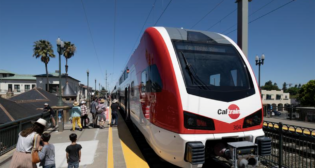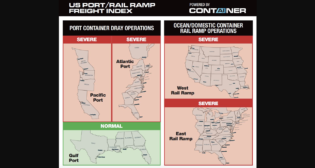
Makeover crucial for dereg defense
Written by Frank N. Wilner, Capitol Hill Contributing EditorFor those sheltering railroads against assaults on regulatory freedoms, the 1980 Staggers Rail Act (Staggers) is considered sacrosanct.
Shippers lacking effective transportation alternatives say conditions have changed profoundly since 1980, with railroads now financially sound and capable of meeting current and future service needs without captive shippers paying, in perpetuity, higher rates than customers with truck and barge options.
Notably embracing this position is Ph.D. economist Harvey A. Levine, with a 360-degree perspective on rail regulation. Over four decades, he has studied the issues as an academic, a statistician at Surface Transportation Board (STB) predecessor Interstate Commerce Commission (ICC), as chief economist for the Association of American Railroads (AAR), and now a shipper consultant.
Levine says regulatory fine-tuning will not upset the railroad renaissance, constructed solidly through progressive legislation; regulatory enlightenment; financial aid; and a rejuvenated management that embraced mergers, streamlined networks, adopted innovative technology and tailored service to shipper wishes:
• Creation of Amtrak saved railroads billions of dollars.
• Federal assistance restructured failed Northeast and Midwest railroads. • The 1976 Railroad Revitalization and Regulatory Reform (4-R) Act exempted competitive traffic from regulation; eased the path for mergers and network rationalization; established an unregulated zone of rate-making flexibility; ordered regulators to develop revenue adequacy standards; and outlawed discriminatory state and local taxes.
• Tax law changes allowing accelerated depreciation dispensed a $2.5 billion cash windfall.
• Mergers, track abandonments and line sales delivered productivity improvements through economies of scale and density. Some 40% of Class I track was jettisoned while revenue ton-miles increased 85%.
• Labor agreements eliminated the caboose, reduced crew size from five to two and allowed remote-control yard switching.
• Doublestack operations extended market reach and slashed costs.
• Railroads shifted 70% of rolling stock ownership costs and risks to shippers and private investors, while improved locomotive design boosted fuel efficiency and pulling capability.
Staggers strengthened the 4-R Act. It restricted maximum rate regulation to shipments where railroads have market dominance and rates exceed a minimum threshold; permitted confidential rate contracts; shifted to shippers the burden of proof; and permitted uncontested recovery of increased fuel, labor and materials costs.
Levine says that with two-thirds of rail traffic now free of regulatory oversight, and railroads experiencing no difficulty attracting record levels of private-sector investment for maintenance, renewal and expansion—the essence of revenue adequacy—regulatory fine-tuning is justified. He advocates harmonizing STB revenue adequacy standards with those used by Wall Street, and placing greater restraints on the rate-making freedoms of revenue-adequate railroads.
As additional evidence regulatory fine-tuning will not threaten the rail renaissance, Levine cites industry acceptance of the 2015 STB Reauthorization Act, which simplifies, speeds and strengthens regulatory oversight of shipper rate complaints; and Canadian Pacific’s (CP) volunteering sole-served shippers access to a second railroad in exchange for authority to merge with Norfolk Southern. CP offers to open gateways to competitive pricing and allow reciprocal switching for captive shippers in terminal areas.
What was so four decades ago, no longer is so today. Service quality improved; most rates, adjusted for inflation, declined; and inflation-adjusted rail costs tumbled even more.
If Levine is mistaken that new caps on captive shipper freight rates will not upset the rail renaissance, then railroads and the nation will pay a steep price. What to do? To counteract populist appeals to evenhandedness, railroads must inspire a new generation of opinion leaders and decision-makers devoid of references to the decades’ old 4-R or Staggers acts, but having an understanding of free markets.
Required is stronger intellectual reasoning, not intrepidly pointing to laws familiar only to the millennials’ grandfathers as a mutually agreed-to bulwark not to be breached. Otherwise, railroads are defending a modern-day Maginot Line.
Baseball legend Satchel Paige warned, “Don’t look back. Something might be gaining on you.” It’s the millennials, and effective messages must be crafted for their 21st century intellectual appetites.



